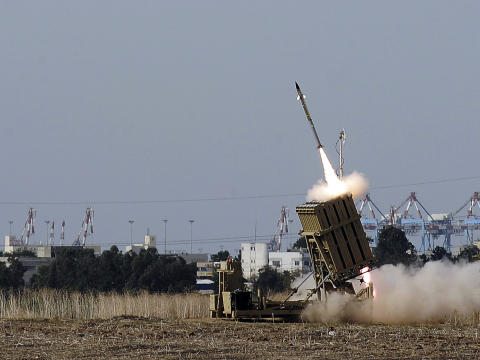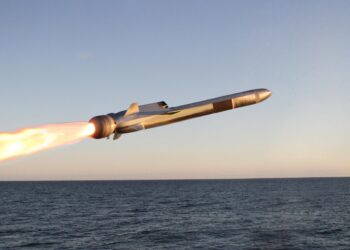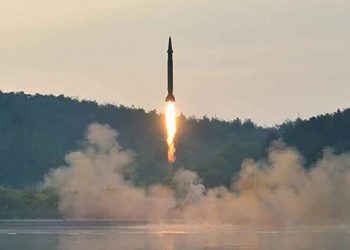Last month’s eight-day extended firefight between the terrorist group Hamas and Israel was much more than just the most recent round of violence in a decades-long war between some Arabs and the Jewish state. It also marked a military revolution, one with profound implications for the future of conflict and for the balance between offensive and defensive capabilities.
For the first time since ballistic missiles were fielded some 68 years ago, a defensive capability was able to defeat this threat. Going by the somewhat biblical name of Iron Dome, this missile defense system successfully intercepted some 85 percent of the rockets and missiles launched against Israel. This was a heretofore unheard of success rate.
In an editorial article in today’s Wall Street Journal, Michael Oren, Israel’s ambassador to the United States, heralded this revolution. As he discussed, the success of Iron Dome was the result, in part, of the successful integration of a number of component technologies each of which has seen dramatic improvements in performance, speed and accuracy. Advanced sensors, high speed computers, sophisticated battle management algorithms and near real-time communications networks allowed Iron Dome not only to accurately and rapidly detect and track very short time-of-flight rockets but to predict their likely impact points. Improvements to rocket motors and missile guidance systems armed Iron Dome with a hit-to-kill interceptor capable of extremely high speed and exceptional terminal maneuverability.
In addition, and more significant in terms of a military revolution, was Iron Dome’s revolutionary concept of operations. In the past, because the defender could not be certain where an inbound ballistic missile was heading, missile defense systems were faced with the all-but insurmountable challenge of having to intercept all incoming warheads. Because the Iron Dome system could predict the likely impact point for an incoming weapon, a firing doctrine was created that only sought to engage those that were heading for built up or populated areas. Iron Dome was able to ignore about half the missiles Hamas launched. This turned the traditional cost exchange ratio between the ballistic missile offense and interceptor defense on its head.
The “Iron Dome revolution” presents a defender with a new range of engagement options. In the event of a larger attack such as might be executed by Hezbollah, the Lebanese terrorist organization believed to have an arsenal of some 30,000 rockets and missiles, the Israeli defenses, the Israeli military, could send its population into air raid shelters and choose to defend only critical infrastructure and military facilities. Or, employing advanced sensors, the Israeli defenses could preferentially engage larger, longer-range missiles that carry heavier payloads or possibly chemical weapons, accepting a greater level of damage from rockets with smaller payloads.
The “Iron Dome revolution” poses a unique set of challenges for the attacker. The least satisfactory solution, given the defender’s options for employing his defenses, is to increase the number of rockets and missiles launched. A more likely response would be to deploy much more accurate offensive systems so that many fewer would land in open spaces. Unfortunately, for Hamas, Hezbollah and their supporters, this will mean an order of magnitude increase in the cost of a new offensive arsenal. Israel plans to deploy a three layer national defense consisting of Iron Dome, David’s Sling and the Arrow systems, thereby further complicating any attacker’s efforts. There are ways also of interfering with missile guidance systems as well as options for improving passive defenses for potential targets that will reduce their vulnerability to attack or damage.
The U.S. military, facing potential large-scale ballistic missile threats, needs to pay close attention to the “Iron Dome revolution.” Unlike Hamas and Hezbollah’s use of rockets and missiles as indiscriminate terror weapons, U.S. adversaries will employ their missile arsenals to launch coordinated, even structured attacks on military facilities, troop concentrations and naval battle groups.
The Israeli experience suggests that it will be possible to undermine such attacks through the use of innovative concepts of operations and tactics for engagements based on the ability to rapidly detect and characterize such attacks. For example, the threat to U.S. airbases in the Western Pacific posed by Chinese conventionally-armed ballistic missiles may be rendered moot if a defense can hold off the attack just long enough for aircraft to be launched.
The idea behind the Reagan era Strategic Defense Initiative was not to destroy all incoming warheads but to disrupt the structure of a first strike thereby guaranteeing that the Soviet Union would suffer a devastating retaliatory blow. This required the defense to preferentially target certain incoming Soviet missiles and to preferentially defend certain targets, which was extremely difficult to do with the technologies of the 1980s. As Iron Dome demonstrated, a preferential defense is now quite feasible.
The U.S. helped the development of Iron Dome with both financing and technical expertise. There have even been proposals for the U.S. to buy Iron Dome batteries. What could be even more valuable is the development and deployment of a sensor, battle management and communications network for U.S theater missile defenses as capable as that demonstrated by Iron Dome.











